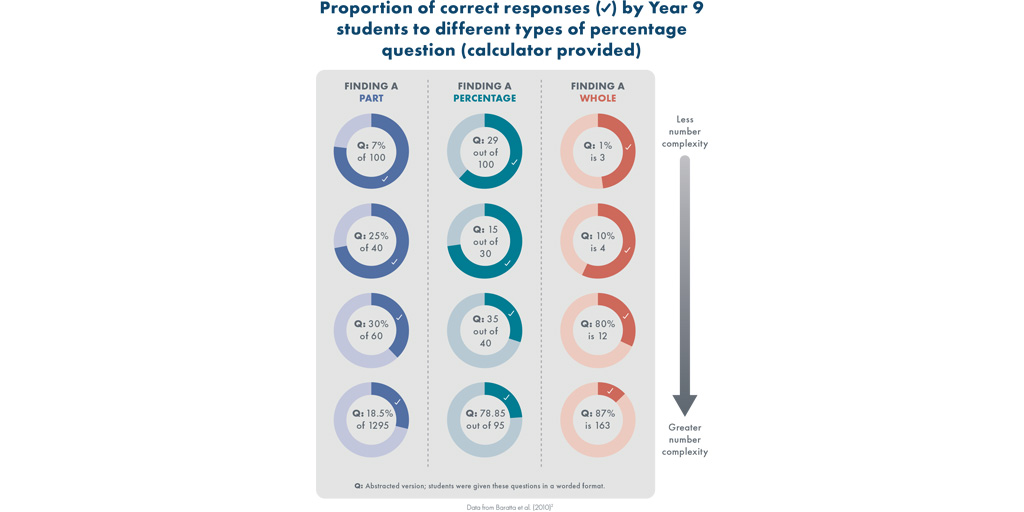31 August 2021

What does research suggest about the teaching and learning of percentage?
- Percentages are commonplace but are an under-researched representation of proportion
- Approaches grounded in proportional reasoning with real-life examples are recommended over those that are procedural or atomised
- A good grounding for early percentage thinking involves comparison, correspondence and considering “so-many-per-so-many” situations, working on fractions first so that students can visualise percentage as parts-per-hundred
- Students may be asked to find a percentage part of a whole, represent a part of a whole as a percentage, or find the whole when given a percentage part; this last is often the hardest for them
- Students also find dynamic modelling of percentage change difficult as it involves change in what constitutes the “whole”
- It is suggested that early opportunities to develop and explore percentage benchmarks of 1, 5, 10, 25, 50 and 100 are beneficial
- Students should have opportunities to move flexibly between representations such as the bar, ratio table, double number line, and their own representations of percentage
View Espresso